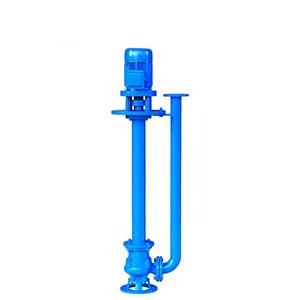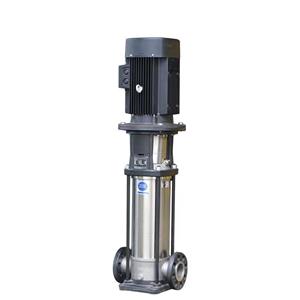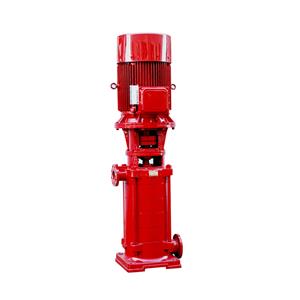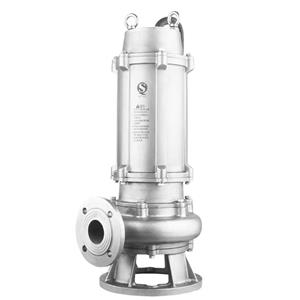Company news
-
Self-priming pumps are versatile and efficient for many fluid transfer applications, but they require proper installation, maintenance, and operation to ensure longevity and optimal performance. By understanding the working principle, selecting the right fluid, conducting regular maintenance, and troubleshooting potential problems, you can maximize the efficiency of your self-priming pump and avoid costly downtime or repairs. Whether you are using it in a wastewater treatment plant, agricultural setting, or industrial process, following these best practices will help keep your pump running smoothly and efficiently.
-
Self-priming pumps are highly versatile and efficient, particularly in applications where priming is a concern. They are capable of operating under varying fluid conditions and can handle air, making them invaluable in certain industries. However, their performance is limited by factors such as suction lift, fluid viscosity, air handling capacity, and the types of fluids being pumped. These pumps also require regular maintenance to keep them running efficiently. By understanding the specific operating conditions and limitations, users can ensure that self-priming pumps perform optimally and last for a long time.
-
1001-2025
Working Principle of a Self-Priming Pump
The self-priming pump is a highly effective and versatile pump type that eliminates the need for manual priming, saving time and effort during startup. It works by using centrifugal force to evacuate air and create a vacuum, allowing liquid to be drawn into the pump even when the casing is initially empty. Self-priming pumps find applications in a wide range of industries, including water supply, drainage, chemical handling, and agricultural irrigation. Despite their advantages, they do have limitations in suction lift and require regular maintenance to ensure long-term efficiency.
-
Choosing between a single-stage and a multistage pump depends largely on the specific requirements of the application. Single-stage pumps excel in low-pressure, high-flow situations where simplicity and cost-effectiveness are key. In contrast, multistage pumps are ideal for high-pressure applications where efficiency, reliability, and versatility are critical. By understanding the advantages, disadvantages, and practical applications of each type, engineers and system designers can select the appropriate pump to meet the needs of their projects, ensuring optimal performance and cost-efficiency over the long term. Whether it’s handling large volumes of water for irrigation or supplying pressurized water for a high-rise building, both single-stage and multistage pumps offer solutions that meet different operational demands.
-
Temperature is a key factor that can significantly affect pump performance, leading to issues such as reduced efficiency, material degradation, cavitation, and even pump failure. High temperatures can increase the viscosity of fluids, degrade materials, and reduce efficiency, while low temperatures can thicken fluids, cause freezing, and reduce pump capacity. To mitigate these effects, it is essential to choose the right pump for the application, maintain proper temperature control, and regularly monitor the system’s performance. By understanding the impact of temperature on pump systems and implementing effective solutions, industries can ensure optimal pump performance, improve energy efficiency, and extend the lifespan of their equipment. Whether dealing with high or low temperatures, proactive planning and maintenance are key to overcoming temperature-related challenges in pumping systems.
-
Motor overheating in electric diaphragm pumps is a common issue that can lead to reduced pump efficiency, premature motor failure, and costly downtime. Identifying the root causes of overheating, such as inadequate ventilation, overloading, insufficient lubrication, improper voltage supply, excessive pump speed, worn-out components, and environmental factors, is essential for preventing this problem. By implementing the appropriate solutions—such as improving ventilation, optimizing pump operation, maintaining lubrication, ensuring stable voltage, and performing regular maintenance—pump operators can ensure that their diaphragm pumps run efficiently and reliably, extending the life of both the motor and the pump system.
-
Hydraulic losses in pumps can significantly impact system efficiency, energy consumption, and maintenance costs. Understanding the causes of these losses—such as friction, local disruptions, and cavitation—allows engineers to implement effective mitigation strategies. By optimizing pump design, controlling flow rates, preventing cavitation, and conducting regular maintenance, operators can significantly reduce hydraulic losses and improve the overall performance of their pumping systems. Through careful planning and ongoing system management, substantial cost savings and operational efficiency gains can be achieved.
-
In summary, while both strong alkaline and strong acidic liquids present challenges in terms of material compatibility, corrosion resistance, and pump design, the differences primarily lie in the choice of materials and coatings. Alkaline solutions often require pumps made of materials such as polypropylene, PVDF, or titanium, while acidic solutions require fluoropolymer materials, stainless steel alloys, or Hastelloy. Seals, gaskets, and coatings also play a crucial role in ensuring that the pump can withstand the corrosive effects of the fluid over time. Selecting the appropriate pump for either strong alkaline or acidic applications requires careful consideration of the chemical properties, temperature, and flow rate of the liquid being pumped, as well as the required level of corrosion resistance.
-
The pump base plays a fundamental role in ensuring the reliable and efficient operation of any pumping system. By providing structural support, isolating vibrations, maintaining proper alignment, and reducing noise, the pump base significantly contributes to the overall performance and longevity of the pump. When designing or selecting a pump base, considerations such as material choice, vibration isolation, and proper sizing are crucial to ensure optimal pump operation. Proper attention to the pump base will result in fewer maintenance issues, improved efficiency, and extended pump lifespan, ultimately contributing to the success of the entire pump system.
-
No-negative-pressure water supply systems are revolutionizing how water is managed in urban and industrial settings. Through case studies in residential complexes, manufacturing plants, urban water networks, and remote areas, it is clear that this technology offers significant benefits in terms of water efficiency, energy savings, and system reliability. As cities continue to grow and industrial demands increase, no-negative-pressure water supply systems will likely play an essential role in ensuring sustainable and stable water delivery to communities and businesses alike.




